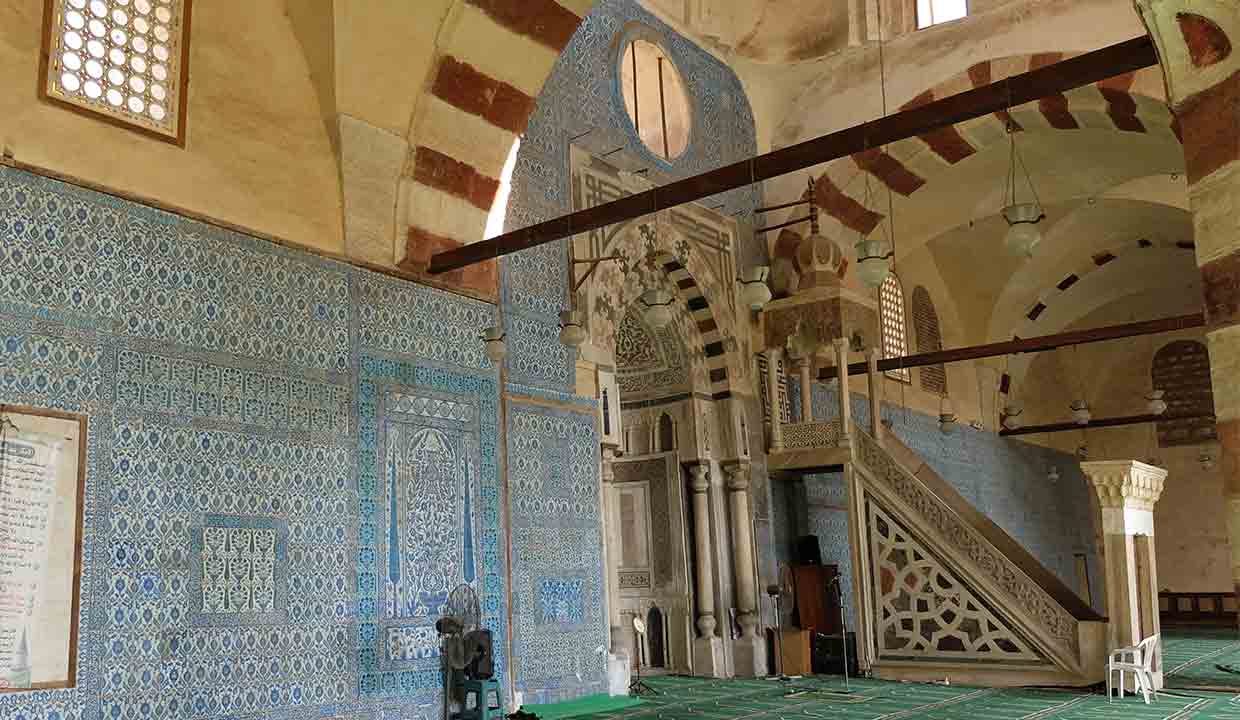Aqsunqur: Cairo’s own Blue Mosque! Witness a fusion of Mamluk and Ottoman brilliance amid the heart of Islamic Cairo’s bustling lanes.
When people hear the term “Blue Mosque,” their minds usually drift to the iconic structure in Istanbul, Turkey. However, nestled within the intricate streets of Cairo, Egypt, lies another architectural marvel known by the same moniker, the Aqsunqur Mosque. Renowned for its splendid blue Iznik tiles, this mosque stands as a testament to Cairo’s rich Islamic heritage and architectural prowess.
History of Aqsunqur Mosque
Constructed in 1347 by Amir Shams al-Din Aqsunqur, the mosque underwent significant changes and renovations over the centuries. The most notable of these transformations occurred during the reign of Ibrahim Agha al-Mustahfizan, giving rise to its Turkish name, “İbrahim Ağa Camii.” Due to his significant contributions, including the addition of the enchanting blue tiles, the mosque is often associated with his name.
Architectural Prowess
Cairo’s Aqsunqur Mosque exhibits the fusion of various architectural styles, blending the Mamluk design with Ottoman influences. The courtyard, with its grand arches, is reminiscent of the Mamluk era, while the blue tiles reflect the Ottoman touch.
Its vast prayer hall is enveloped by a forest of columns supporting pointed arches. These arches create a majestic pathway that leads the visitor’s eye towards the mihrab, the niche that signifies the direction of Mecca. The mosque also boasts an impressive dome, soaring high and visible from various points within the Darb al-Ahmar district.
The Blue Iznik Tiles
The mosque’s standout feature, however, is undoubtedly its blue tiles. Imported from Iznik in Turkey during the 17th century, these tiles are adorned with intricate floral patterns and calligraphic verses. They are not only an artistic masterpiece but also a reflection of the cultural exchange and shared heritage between the Ottoman Empire and Egypt.
Location and Surroundings
The Aqsunqur Mosque is strategically located in the heart of Islamic Cairo, in the Tabbana Quarter of the Darb al-Ahmar district. This places it between two significant landmarks: the historic Bab Zuweila gate and the imposing Citadel of Cairo. Its location makes it an essential stop for anyone on a historical and cultural tour of Cairo, with numerous other monuments, bazaars, and attractions nearby.
Conclusion
The Aqsunqur Mosque may not be as internationally renowned as its counterpart in Istanbul, but it undoubtedly holds its ground in terms of historical significance and architectural beauty. It’s a beacon of Cairo’s illustrious past and a symbol of the city’s place in the wider Islamic world. Whether you’re an avid history enthusiast or simply an admirer of beautiful architecture, the Aqsunqur Mosque is a must-visit when in Cairo.
